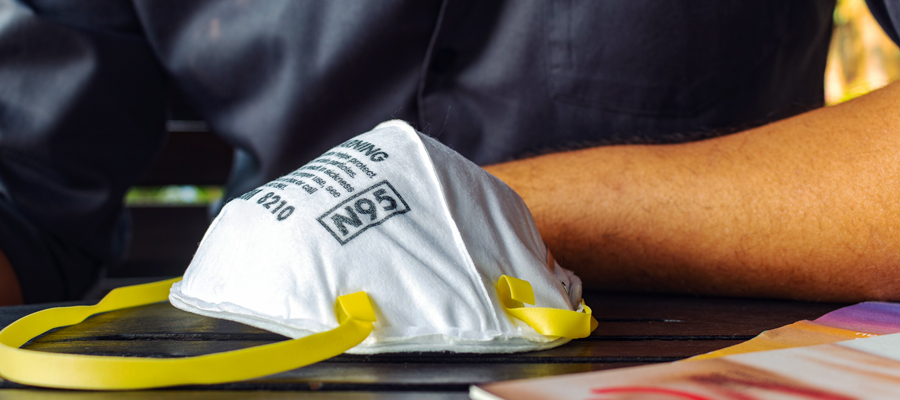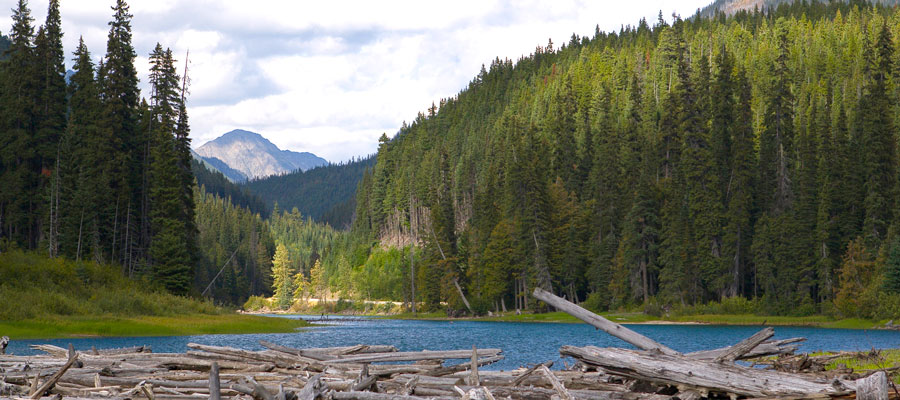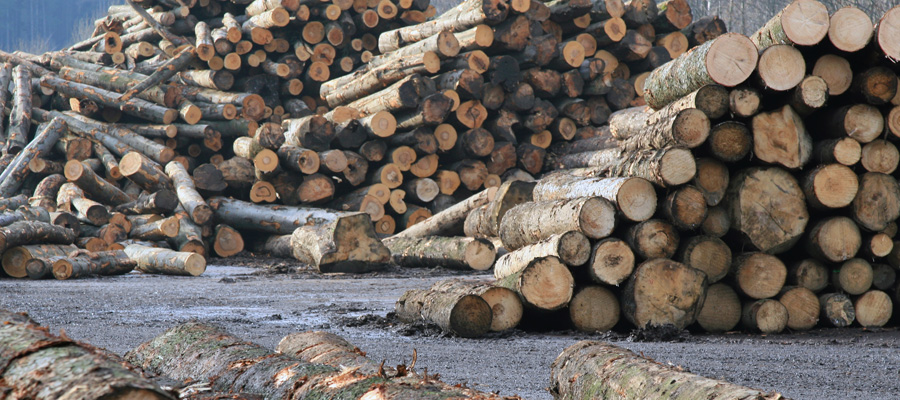Reinventing the forestry industry: Made-in-Canada masks and much more

Canada should seize the moment created by COVID-19 to become self-sufficient in making masks and other essential medical items, and look to new and emerging “bioproducts” to meet the need, not oil-based synthetics, say scientists, who have studied the untapped potential of the country’s forests.
They are joined in that call by Quesnel mayor Bob Simpson. The city in British Columbia’s central interior region is highly dependent on the forest industry. But the industry needs to evolve, Simpson says, and the messy geopolitics unleashed by the pandemic may offer a roadmap for what at least part of that evolution could look like.
As COVID-19 spread and infection rates escalated around the world, governments everywhere rushed to purchase finite numbers of “N95” facemasks resulting in some ugly behavior along the way.
Canada should seize the moment created by COVID-19 to become self-sufficient in making masks and other essential medical items.
Notably, U.S. President Donald Trump invoked his country’s Defense Production Act to try to stop the potentially life-saving masks from being shipped out of the country to buyers in Latin America and Canada. The move was later reversed, but only after mask-maker 3M agreed to import more than 166 million masks, primarily from China, to meet America’s escalating demands for the potentially life-saving masks.
The quid pro quo was that 3M could continue making millions of the masks each month at its U.S. facilities and sell those masks to customers outside the U.S. including Ontario, which had been caught off guard by the president’s unforeseen intervention and temporarily left short 500,000 masks.
The dust kicked up by Trump drove home the pitfalls of globalization. With countries all over the world reliant on goods harvested or manufactured from outside their borders, it is to be expected that in times of crisis countries with the deepest pockets and the greatest political and military clout may resort to using any and all means to get what they want.
Such realities ought to raise questions here at home. What should Canada do to strengthen its preparedness for the next pandemic? Because there will be another one.
Stockpiling is one obvious and wise choice. Buy lots of masks, gloves, gowns, swabs and eye shields now knowing that the day will come when you will need them. Then put them in warehouses in or nearby major cities where the greatest number of hospital beds are.
But beyond that, what about making many if not all of those essential medical products here at home, rather than relying on others to look after our needs? What about leading the way with research and development efforts in Canada to usher in a new generation of medical products including new masks that perform as well as 3M’s N95 mask? And what about doing all of that—and much more—using raw materials sourced from Canada that are not derived from fossil fuels, which are driving our planetary climate crisis?
Long before COVID-19 arrived, Simpson was pushing the provincial and federal governments to embrace policies that encouraged diversification of Canada’s forest industry. Simpson says a “reinvented” forest industry could make all of those medical items and more from “renewable bioproducts.” Provided, that is, that our forests are healthy. And right now they are not. Which is why Simpson says “a large system change” is needed to boost the diversity and resiliency of our forests. If that can be achieved, the possibilities for reinvention are huge, he adds.
What about making many if not all of those essential medical products here at home, rather than relying on others to look after our needs?
Tellingly, Canadian researchers were already thinking along such lines more than a decade ago. Then, like now, a new and deadly coronavirus was an important motivating factor. Knowledge gleaned during the SARS virus outbreak (2002-2004) showed that high-efficiency masks helped protect doctors, nurses, paramedics and others working on the frontlines. But such masks were—and are still—made almost entirely of products derived from synthetic materials.
On its technical specifications sheet for its N95 mask, 3M notes that with the exception of an aluminum strip that acts as the nose clip, all of the rest of the mask’s “globally sourced” materials are oil-derived, including polypropylene (the filter), polyurethane (the nose foam), polyester (the shell and cover web) and thermoplastic elastomers (the straps).
The masks get their name because they are capable of screening out 95 per cent of airborne particles down to 300 nanometres in size (a nanometre is one one-billionth of a metre).
Long before COVID-19 arrived, Simpson was pushing the provincial and federal governments to embrace policies that encouraged diversification of Canada’s forest industry.
Researchers long associated with Canada’s pulp and paper industry wondered whether they could achieve the same performance with wood-based fibres. If they could, masks could be made from renewable products, avoiding the pollution associated with incineration, landfilling and reckless disposal of plastics.
Richard Kerekes, now a professor emeritus at the University of British Columbia’s (UBC) Chemical and Biological Engineering Department, was one of the researchers. A chemical engineer by training, he was also the founding director of the Pulp and Paper Centre at UBC, which opened in 1986 and which he led for more than 20 years.
In April 2008, he and others published a peer-reviewed paper in the Nordic Pulp and Paper Journal that for the first time showed it was possible to create a material from wood pulp to meet the N95 standard for particle capture, but also have an acceptable “pressure drop,” meaning potential wearers would not have to “suck hard” to get the air they needed, Kerekes explained.
The research was driven by the events of just a few years earlier when concerns about SARS were still foremost on many people’s minds.
A key to the research was to figure out how to retain the “fibrils” sprouting from the beaten wet pulp fibres used to make the potential mask material. Retaining those fibrils, which Kerekes describes as “fibres with a bad hair day,” was critical to developing an effective pulp-based mask material that could both capture pathogens and remain breathable. By freeze-drying the material, Kerekes and others succeeded in keeping the fibrils in their desired bed-head state.
Research published four years later in the journal Industrial Engineering and Chemistry Research, showed that by introducing a chemical additive during the freeze-drying process the pulp-based material could be prevented from compressing, further improving its reliability as a potential wood-based substitute for the oil-derived materials in 3M’s N95 mask.
More than a decade after the first research findings were published, however, Kerekes said that further work is needed to create a final mask design. That’s because the R&D efforts that could have resulted in commercialization of the product years ago didn’t occur, in part because of chronic underfunding of pulp and paper research.
That there is potential to make a range of medical products from wood instead of plastic is undeniable
“It’s been my experience . . . that government funding of research for the forest industry, in particular the pulp and paper sector, has been traditionally poor compared to more glamorous fields,” Kerekes says.
That there is potential to make a range of medical products from wood instead of plastic is undeniable, Simpson says. He notes the “success story at Harmac,” the large pulp mill just to the south of Nanaimo on Vancouver Island that would not be here today were it not for the bravery that individual millworkers and investors showed more than a decade ago when they bought a stake in the operation and saved it from receivership.
A few weeks ago, Harmac announced that a major U.S. buyer had contacted the mill saying it wanted to double its purchases of a fine-grained pulp made from Western redcedar. The pulp manufactured by Harmac is then used to make disposable hospital gowns, (non N95) masks, caps and other medical supplies. Harmac’s owners decided that for the time being its production of medical-grade pulp will be the mill’s new mainstay.
“I don’t think our employees have ever been prouder than they are today to make something that is contributing directly to this fight against COVID-19,” said Harmac president Levi Sampson.
The highly sought after pulp product, however, is just the tip of the iceberg of what pulp and paper mills could be making. Re-tooled mills could produce biofuels that replace diesel fuels, biopolymers and bioplastics used in automotive applications and a whole lot more.
Simpson believes that more diversification is exactly what’s needed for Canada’s forest sector, and that both the carrot and stick is needed to encourage the industry’s transition. Lower the boom on greenhouse gas emitters (the stick) while providing funding to offset the costs of getting new technologies into place (the carrot).
Simpson notes that one example of the carrot was the federal government’s announcement in 2009 of its $1 billion Green Transformation Program. The program provided funds to forest companies operating kraft pulp mills and producing “black liquor”, a byproduct in the pulping process. Companies were able to claim a 16 cents per litre subsidy for each litre of black liquor produced, provided that the funds were then invested in environmental upgrades at their mills. The program was a catalyst for many mill owners investing those funds in processes that used black liquor to more efficiently generate power at their mills and to then move excess power onto electrical grids.
Simpson believes that more diversification is exactly what’s needed for Canada’s forest sector, and that both the carrot and stick is needed to encourage the industry’s transition.
While Kerekes bemoans the underfunding of forest products research over the decades, he is encouraged that things are changing. He points to the new Bioproducts Institute at UBC that is devoted to leading research in this emerging sector. The university recently announced it had appointed Orlando Rojas, an internationally recognized authority on bioproducts and biosystems, to head the new institute.
“In the transition from the current fossil-fuel economy to the future advanced bio-economy, we are not only looking to replace fossil fuels with biomass. The real opportunity lies in taking advantage of the complexity and diversity found in nature,” Rojas commented during an interview with The Globe and Mail shortly after his appointment.
Rojas says there are roughly 40 scientists associated with the institute, mainly working in genomics, nanotechnology, polymers and carbon materials, biorefining and biofuels. The research includes efforts to build on the earlier work of Kerekes and others.
Rojas said it does not take much to see that with hundreds of millions of N95 masks being used to protect front-line medical staff attending to patients with COVID-19, a massive amount of waste is being generated from non-renewable fossil fuel-derived products and that a bio-product alternative is far more desirable.
“If you think about the N95s, it’s a terrible situation for the environment. Because if you do the math about the use of these masks around the world, it’s going to be a huge volume,” Rojas said.
At present, Canada’s oil and gas industry, lone among the nation’s resource industries, is the only resource industry to be singled out for financial assistance—a development that Simpson calls “crazy-making” in light of the serious challenges at home and abroad due to climate change.
With hundreds of millions of N95 masks being used to protect front-line medical staff attending to patients with COVID-19, a massive amount of waste is being generated from non-renewable fossil fuel-derived products.
Rojas, says he believes that now may be the perfect time for governments to incentivize bioproducts research and development in Canada. The incentives could include the federal government providing research funding that fosters new science and product development, and provincial governments tying access to forests to new commercial bioproduct ventures.
Getting there will require scientists and the forest industry to convince decision makers that the forest industry is about a whole lot more than just two-by-fours and toilet paper. The long list includes using plant oils and sugars to replace oil-derived plastics, wood-derived biochemicals and resins for making lubricants, solvents and paints, and “biopharmaceuticals” that could one day be used to make vaccines.
“The perception from funding agencies is that forest fibres are old-fashioned materials and technologies,” Rojas says. “What we really need to put in the minds of decision-makers is that the next generation of materials based on fibres are as cool, as interesting and sexy as any other material that exists now.”



